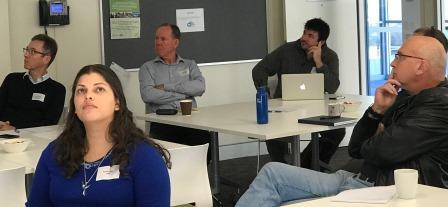When users of subterranean fauna information including resource organisations and regulators came together at a recent workshop hosted by WABSI, they realised that despite their different needs, they all agreed on one thing: we need to know what we don’t know.
The workshop, organised in conjunction with the Chamber of Minerals and Energy acknowledged that scientific uncertainty had caused project delays and additional costs.
Participants then identified a series of questions that could help progress the knowledge required to make efficient decisions. This would deliver more certainty during the approvals processes, whilst ensuring effective monitoring of subterranean fauna.
Dr Lesley Gibson, WABSI’s Biodiversity Survey Node Leader, presented an overview of research findings to date and highlighted the relative infancy of subterranean fauna research. Key issues identified for prioritising research were:
- Efficient, repeatable and effective sampling techniques, taxonomic certainty and utility of new technologies.
- Improved understanding of biotic and abiotic habitat requirements above and below ground/predictive habitat modelling.
- Response to impacts (e.g. water drawdown and vertical migration).
- Resilience to disturbance (e.g. refuges and recolonization, ecosystem function).
Next, WABSI hosted a discussion with leading researchers to explore how the questions posed by end users could be satisfied with multi-disciplinary research.
WABSI will now communicate research project options back to end users for consideration.
“Clearly there is still a lot to learn about subterranean fauna. The communication between stakeholders, facilitated by WABSI, is a critical process in ensuring that research conducted is relevant and useful,” Dr Gibson said.
The first workshop attracted several senior representatives including those from Rio Tinto, BHP Billiton, FMG, Cameco, Roy Hill, the Department of Minerals and Petroleum, Department of Parks and Wildlife, CSIRO as well as the Chair of the Environmental Protection Authority Dr Tom Hatton. The second workshop was attended by leading researchers from several organisations including the WA Museum, Curtin University and CSIRO.
The research only commenced two decades ago and to date, it has focused largely on taxonomy and evolutionary relationships which have helped to inform patterns in diversity and distribution of subterranean fauna, and to a degree, their habitat associations. However, very little is known about their general biology such as how long they live for and how many offspring they produce, or even how subterranean systems function.

